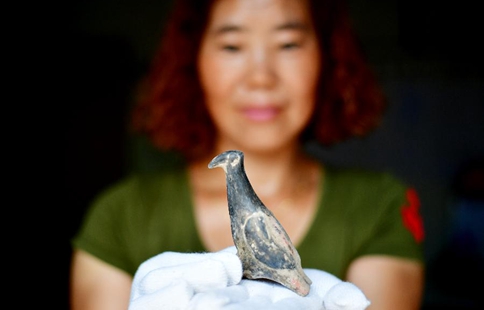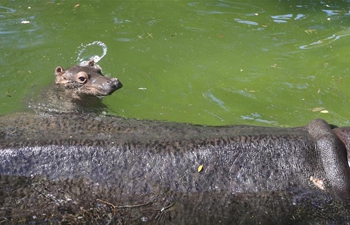SAN FRANCISCO, July 12 (Xinhua) -- New research led by the University of California, San Francisco, has led to a computational method for probing massive amounts of open-access data to discover new ways to use drugs, including some that have been approved for other uses.
By bypassing the usual experiments in biological specimens, the method detailed in a paper published Wednesday online in Nature Communications analyzes drugs already approved by the U.S. Food and Drug Administration (FDA) and other existing compounds to the molecular fingerprints of diseases like cancer.
According to researchers involved in the study, the specificity of the links thus determined between these drugs and the diseases predicted to be treatable with the drugs holds the potential to target drugs in ways that minimize side effects, overcome resistance and reveal more clearly how both the drugs and the diseases are working.
"This points toward a day when doctors may treat their patients with drugs that have been individually tailored to the idiosyncracies of their own disease," first author Bin Chen, assistant professor with the Institute for Computational Health Sciences (ICHS) and the Department of Pediatrics at UCSF, said of the result from the team's efforts.
With the method, the researchers identified four drugs with cancer-fighting potential, demonstrating that one of them, an FDA-approved drug called pyrvinium pamoate, which is used to treat pinworms, could shrink hepatocellular carcinoma, a type of liver cancer, in mice. The cancer, which is associated with underlying liver disease and cirrhosis, is the second-largest cause of cancer deaths around the world.
They first looked in The Cancer Genome Atlas (TCGA), a comprehensive map of genomic changes in nearly three dozen types of cancer that contains more than two petabytes of data, and compared the gene expression signatures in 14 different cancers to the gene expression signatures for normal tissues that were adjacent to these tumors. This enabled them to see which genes were up- or down-regulated in the cancerous tissue, compared to the normal tissue.
Once they knew that, the team searched another open-access database, called the Library of Integrated Network-based Cellular Signatures (LINCS) L1000 dataset, to see how thousands of compounds and chemicals affected cancer cells; and ranked 12,442 small molecules profiled in 71 cell lines based on their ability to reverse abnormal changes in gene expression that lead to the production of harmful proteins. These changes are common in cancers, although different tumors exhibit different patterns of abnormalities. Each of these profiles included measurements of gene expression from 978 "landmark genes" at different drug concentrations and different treatment durations.
The team then used a third database, ChEMBL, for data on how well biologically active chemicals killed specific types of cancer cells in the lab, specifically about a drug efficacy measure known as the IC50. Finally, they used the Cancer Cell Line Encyclopedia to analyze and compare molecular profiles from more than 1,000 cancer cell lines.
Their analyses revealed that four drugs were likely to be effective, including pyrvinium pamoate, which they tested against liver cancer cells that had grown into tumors in laboratory mice. "Since in many cancers, we already have lots of known drug efficacy data, we were able to perform large-scale analyses without running any biological experiments," Chen was quoted as explaining in a news release from UCSF.
Chen and his colleagues developed a ranking system, which he calls the Reverse Gene Expression Score (RGES), a predictive measure of how a given drug would reverse the gene-expression profile in a particular disease by tamping down genes that are over-expressed, and ramping up those that are weakly expressed, thus restoring gene expression to levels that more closely match normal tissue.
Chen's collaborators from the Asian Liver Center at Stanford University examined four candidate molecules with known mechanisms of drug action. They found that all four killed five distinct liver cancer cell lines grown in the lab. Among them, pyrvinium pamoate was the most promising drug, shrinking liver tumors grown beneath the skin in mice.

















